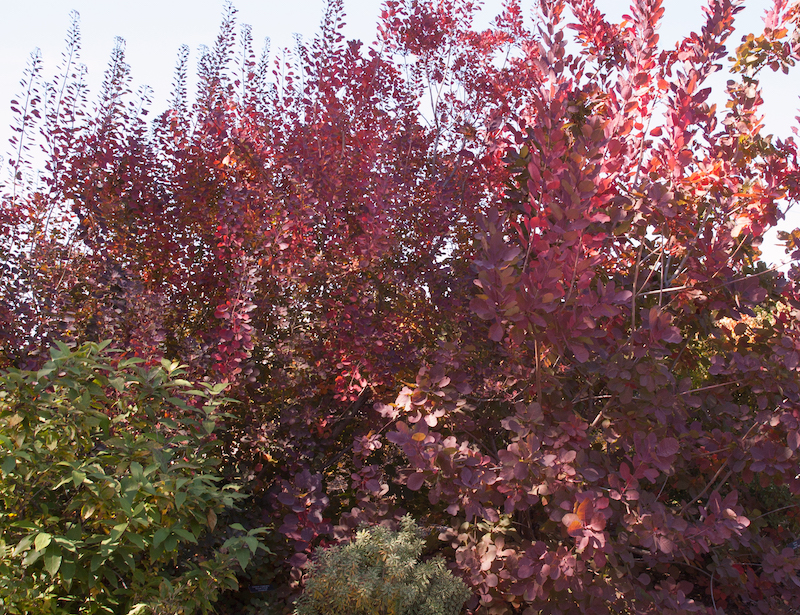While many ornamental trees and shrubs can be susceptible to diseases, Smoke Trees are considered disease resistant. The only major diseases that can afflict Smoke Trees are fungal diseases, like Verticillium Wilt. These types of infections can be avoided if your Smoke Tree is planted in well-draining soil from the start. Giving a plant the best growing conditions possible and keeping them healthy will allow them to naturally fight off most diseases.

Verticillium Wilt
Verticillium Wilt is caused by a soil-borne fungus (Verticillium dahliae) that most often affects plants whose roots become damaged, typically from overwatering and poor drainage. While the fungus attacks the roots, the infection becomes apparent when other parts of the plant start to wilt, even when the soil is damp. This is due to the inability of the damaged roots to transport water and nutrients, causing the rest of the plant to become dehydrated. If one section of your Smoke Tree wilts suddenly, it may have Verticillium Wilt.
Treating Verticillium Wilt on Smoke Trees
Unfortunately, once a plant’s roots have been damaged to the point where leaves and branches are wilting, there isn’t much that can be done. This is especially true if the plant is sizable and planted in the ground. Even if a potted plant infected with Verticillium dahliae is replanted in fresh soil, the fungus will still live in the plant, making further infection inevitable. The life of an infected plant can be extended with proper care and watering, but it may ultimately succumb to the disease.

Photo courtesy of Nicholas Brazee, The University of Massachusetts Amherst
Preventing Verticillium Wilt on Smoke Trees
For soil-borne fungi like Verticillium dahliae, prevention is key. Always plant Smoke Trees in well-draining soil and allow the soil to dry out a bit before watering deeply. When you see a plant wilting, don’t always assume it needs more water. Instead, touch the soil and determine that it is dry beneath the surface before watering.
The Verticillium dahliae fungus lives in the soil, sometimes for a decade, until the right conditions cause it to spread. If your plant becomes infected and dies, avoid planting another plant that is susceptible in its spot. Always dispose of diseased plants, rather than adding them to compost where the pathogen can continue to survive and possibly infect future plants. One way to prevent future Verticillium Wilt is by solarizing your garden. That is, placing thin clear plastic over your garden bed, securing it with heavy bricks, and allowing the sun to bake the soil over the summer, making it uninhabitable (this can only be done in a garden without existing plants, prior to planting).
Sources:
"Cotinus coggygria." North Carolina Extension Gardener Plant Toolbox. plants.ces.ncsu.edu
"Cotinus coggygria: Smoketree." University of Florida Environmental Horticulture. hort.ifas.ufl.edu
 |
Author Lynn Gusman - Published 7-27-2023 |
